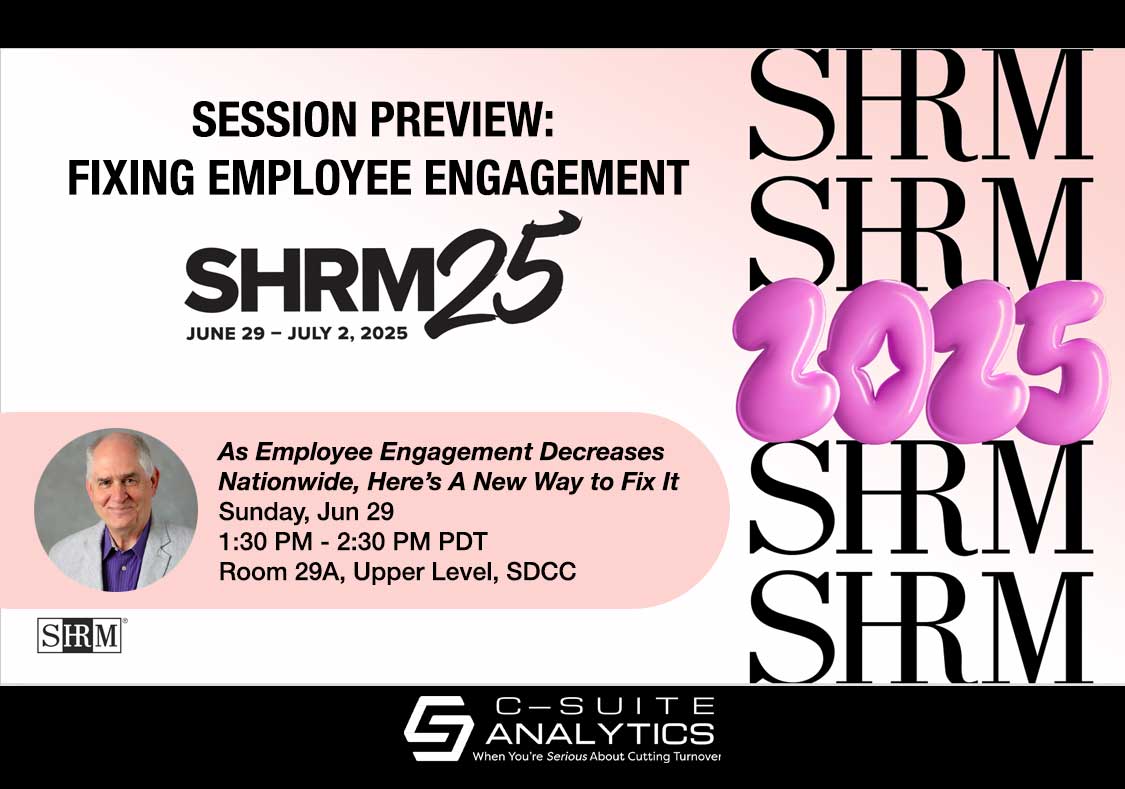To be blunt, employee engagement is a mess. Gallup says global disengagement costs $8.8 trillion…
January Numbers Prove Recruiting Alone Is Dog-Chasing-Tail

Our Bureau of Labor Statistics releases new employment data each month and January’s was a doozy. Two quotes from labor experts nailed the data’s true meaning:
Significantly beating analyst expectations, the labor market represents the resiliency of the U.S. economy.
Once again, it seems the labor market is a beast that cannot be tamed – not by recession expectations, not by the highest interest rates in over twenty years, nor by inflationary pressures.[i]
U.S. employers added 353,000 new jobs in January, followed by the BLS’s revising their added-jobs number for December from 216,000 to 333,000. Whereas the industry mainstays for adding jobs have historically been government, healthcare, and leisure & hospitality, even manufacturing and retail got a boost.
Introducing The Great Gully
Many in the media are saying “The Great Resignation” is over…though maybe “the great gully” will drive attention to the real culprit here. The report cited above noted that one reason given for the constant hiring in healthcare is “the aging population”. Last year I consulted with the Census Bureau by initially asking that with all of the baby boomers on track to retire or having already done so, how many net new workers will enter the workforce going forward. The answer is very few. Specifically, a net change of just 3.7 million more workers will join the U.S. workforce during this decade. Then the Census Bureau disclosed that their projection was done prior to COVID-19 for which fed chair Jerome Powell said caused us to lose 3.5 million workers. That’s leaves a net addition of just 200,000 workers for this decade. And more than that number are changing jobs each month. Yikes.
———–
Further Reading: The Labor Shortage Wake-Up Chart is Here
———–
Doing The Math on Jobs Report
So we know our economy added just short of 700,000 jobs in the two-month period of December and January. Given that our unemployment rate is low…3.7%…and there are few new entrants into our workforce, it’s a cinch to conclude that the great majority of those 700,000 new workers were actually job-changers, that they left one job for another job. And those workers can easily change jobs not only because they can job-search during their workdays on the computer you gave them, but there remain a full 9 million open jobs across our country. For comparison, that is about one-third more open jobs than we had just prior to the pandemic. And since then we’ve lost the 3.5 million workers as mentioned above plus we’ve seen a downward plunge in new workers entering our economy.
Media Reports of Layoffs Don’t Impact Your Business
Media outlets search for any alarming data to gain your attention so layoffs are red meat for them. But while tech companies and others are occasionally shedding workers, the actual number of workers being laid off and the resulting overall percentage that is exiting our workforce are not alarming. BLS data has been telling us since the pandemic that exits of any kind are at all-time lows.
———–
Further Reading: Is Recruiting Today a Doom Loop for Tomorrow’s Turnover?
———–
Back to Dogs-Chasing-Tails
Never has employee retention mattered more. Beyond the obvious reasons, consider that top performers out-perform average performers by 4 to 1.[ii] Chewing on that for a moment, one first realizes that all employees are not equal. But during these dog-chase-tail times, retaining even your average workers versus having to dip into the highly competitive recruiting pool makes more sense than continuously playing in the doom loop of recruit/train/do exit interviews and then start over.
Should you wish to learn a research-based way to cut employee turnover, start here, then email me if you’d like to learn specific ideas and results for cutting turnover in your industry, dfinnegan@c-suiteanalytics.com.
[i] https://www.shrm.org/topics-tools/news/talent-acquisition/bls-hr-jobs-unemployment-feb-2024?utm_source=marketo&utm_medium=email&utm_campaign=editorial~Talent~NL_2024-02-07_Talent-Acquisition&linktext=Job-Growth-Explodes-in-January&mktoid=49296740&mkt_tok=ODIzLVRXUy05ODQAAAGRI75-cvvBeJPT21xjAkczzmlbwyrtq9mWP3TCJeg80Eu59_xB4yPlSDjXJu5jyD5V81p36IJ-ReGWDnXHIX2ZePGJCrBZSIE13hmoAitTu4wtymGw
[ii] I learned this and other retention-related research when collaborating with an industrial/organizational professor several years ago.



